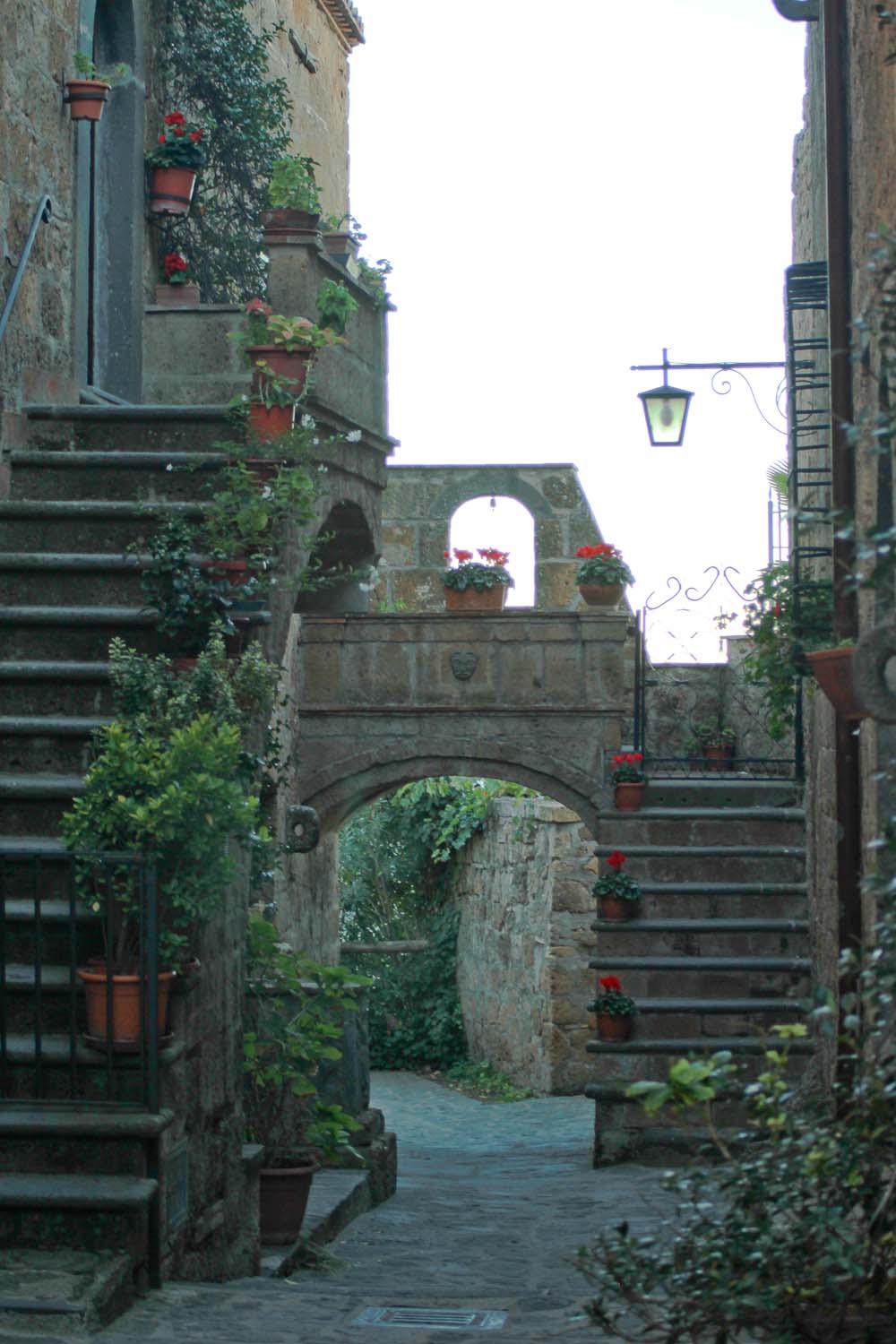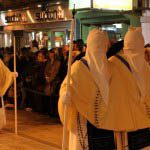Civita di Bagnoregio
The Dying Town That Lives On
Civita di Bagnoregio, also known as “La città che muore” (“The Dying Town”), has experienced a revival in recent years, thanks to an influx of curious tourists. This picturesque hilltop town, once nearly abandoned, now draws visitors from all over the world.
First Impressions: A Ghost Town with a Pulse
As you approach Civita di Bagnoregio, its striking resemblance to Craco, a ghost town in Basilicata, might catch your eye. Like Craco, Civita perches on an isolated cliff, while erosion continues to carve away the surrounding landscape. However, Civita still maintains a small, but vibrant, community, preventing it from becoming completely deserted.

Civita di Bagnoregio outlined against the blue mountains of Umbria. A lot of the medieval town’s houses have been swallowed by landslides and earthquakes over the centuries, but a small nucleus remains.
Ancient Origins: From the Etruscans to the Present
Civita di Bagnoregio’s roots go deep, dating back to the Etruscan civilization, which inhabited northern Lazio and Tuscany long before the rise of Rome. The Etruscans strategically built Civita on a steep hill and surrounded it with thick protective walls. This location, near one of the region’s main commercial routes, made Civita an ideal hub for trade and defense.
In its prime, Civita featured five gates and a tunnel called the “Bucaione,” which led directly to the Valle dei Calanchi. Archaeological discoveries in the area include a necropolis and chambers carved into the rock, both dating back to the Etruscan period. Even then, Civita faced threats from earthquakes and erosion. The Etruscans responded by digging ditches and canals to divert rainwater and rivers, trying to protect their city from landslides.

Ancient stone walls and potted flowers on outside staircases emphasize the poetic romance of Civita di Bagnoregio.
A Glimpse of Medieval Charm
Civita di Bagnoregio is not only rich in ancient history but also medieval charm. It is the birthplace of Saint Bonaventure (1221–1274), the “second founder” of the Franciscan order. Although his childhood home has long since crumbled, the town has retained much of its original medieval character.
Wandering through Civita’s narrow streets, you’ll find houses built from natural stone, many featuring external staircases and flowered balconies. The town’s Romanesque church, San Donato, stands at the heart of Civita. Inside, visitors can view a wooden crucifix believed to have miraculously spoken in 1499. According to local legend, it assured a pious woman that her prayers had been heard, and the plague devastating the town would soon end.
Events That Bring History to Life
Civita’s connection to its past doesn’t stop at its architecture. The town hosts several annual events that echo its medieval history. For instance, on Good Friday, residents parade the revered wooden cross through the streets in a solemn procession. On the first Sunday in June and the second Sunday in September, the town holds a traditional donkey race, a lively event that adds a playful contrast to the town’s quiet streets. During the Christmas season, Civita transforms into a living nativity scene, with locals reenacting the birth of Christ in the town square. Planning your visit to coincide with these events can add an extra layer of excitement to your experience.

A 600 metre long concrete bridge anchors Civita di Bagnoregio to firm land.
The Bridge: Civita’s Lifeline
Undoubtedly, the most awe-inspiring feature of Civita di Bagnoregio is the pedestrian bridge that links it to the mainland. This modern structure offers phantasmagorical views of the ancient town, seemingly floating above steep red cliffs and white ravines. In 1944, German forces bombed the previous bridge, leaving Civita disconnected until a new concrete footbridge was built in 1965.
Today, this 600-meter bridge serves as the town’s lifeline. Only pedestrians can cross it, although the ten permanent residents, along with business owners and service workers, are allowed to use motorcycles or three-wheeled vehicles like the Ape to transport supplies. As they pass, visitors must squeeze against the railings, marveling at the breathtaking drop beneath them.
A Haven of Peace and Quiet
The pedestrian bridge not only connects Civita to the mainland but also acts as a gateway to tranquility. Many visitors come to Civita to escape the hustle and bustle of Italy’s major cities, spending a few hours or even a weekend enveloped in the peaceful silence that reigns here. Surrounded by dramatic cliffs and the vastness of the sky, Civita feels like a town suspended in time.
Italian writer Bonaventura Tecchi (1896-1968), who was born in Civita, capture the town’s essence in his works, describing it as a place clinging to life amidst silent, luminous ravines. In essays like “Antica Terra” he wrote, “The fairy tale of the dying town… will last.” His words seem more relevant today than ever, as Civita continues to thrive despite its precarious location.
Preserving Civita for Future Generations
Civita di Bagnoregio has applied for UNESCO World Heritage status, a designation that would help preserve its unique history and architecture for future generations. Should UNESCO approve the application, it would ensure that this remarkable town continues to welcome visitors from around the globe, maintaining its status as a living monument to Italy’s rich cultural heritage.
Practical Information: How to Visit
Accessing Civita di Bagnoregio requires crossing the famous footbridge, and a small fee of €1.50 to €5.00 is charged, depending on the time of year. This modest fee helps maintain the bridge and supports the preservation efforts for the town.
This post was last updated in October 2024
Leave a Reply
Want to join the discussion?Feel free to contribute!
Leave a Reply Cancel reply
This site uses Akismet to reduce spam. Learn how your comment data is processed.


 Italian Notes
Italian Notes
For visitors with physical issues, is there any way to get transportation into the town?
According to the Civita di Bagnoregio homepage (https://www.civitadibagnoregio.cloud/disabili/) the municipality and the local Red Cross offer free transport for severely disabled persons at regular intervals every Saturday and Sunday. The service takes off from the entry to the bridge. On weekdays the service should be requested two days in advance.